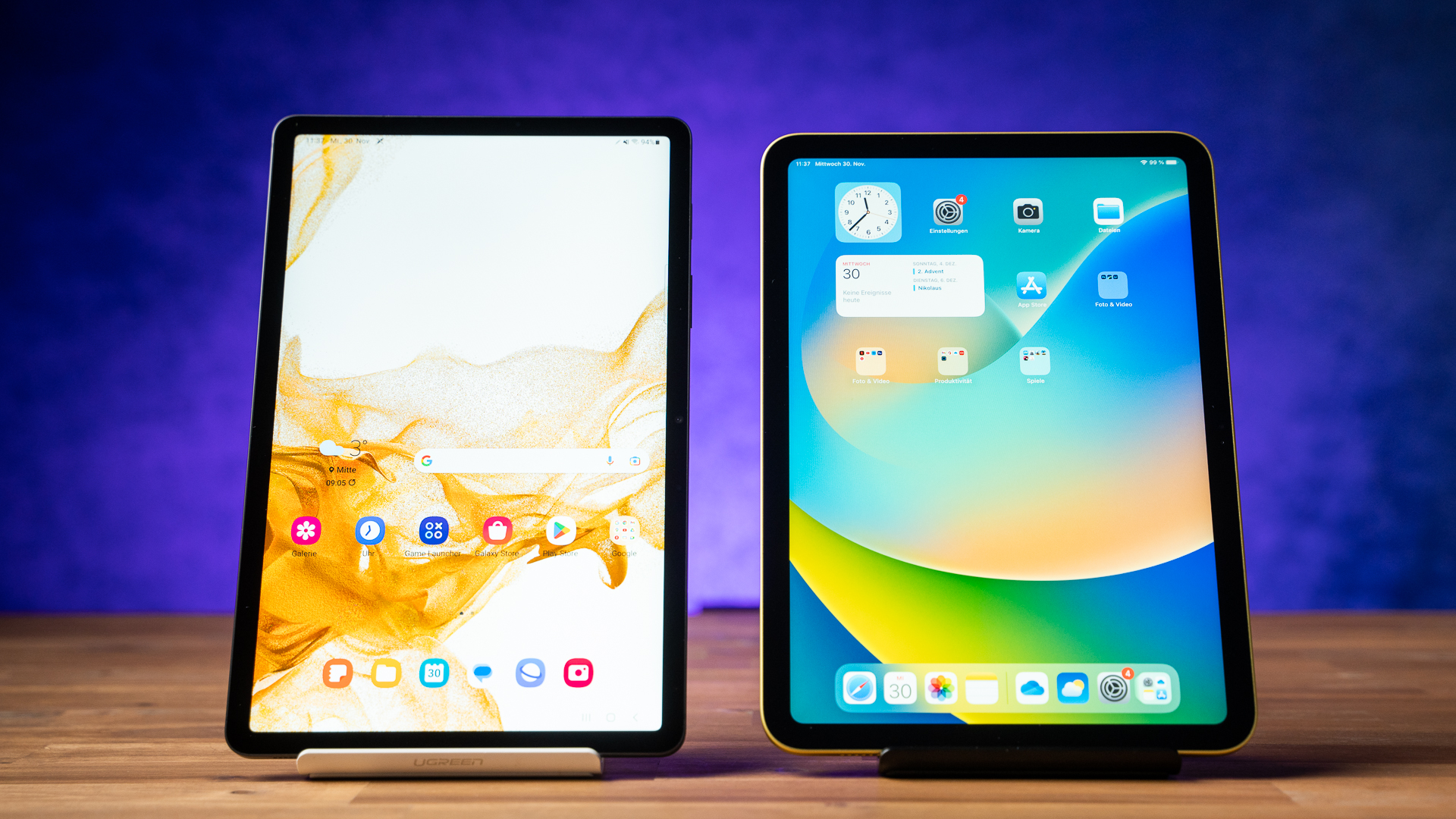Android
Laminated vs. Non-Laminated Screens: What’s the Difference?
Browsing tablets and unsure what “laminated” and “non-laminated” mean? Read on to find out.

There are a ton of terms you need to be familiar with when evaluating tablet specs, but an often overlooked spec is the screen construction and whether you want a laminated or non-laminated screen. While both styles are equally valid, we think there’s one clear winner in the laminated vs. non-laminated screen comparison.
Laminated screens are standard on most tablets these days, and it’s not hard to see why. They offer many advantages over the traditional non-laminated construction methods that all users can appreciate, including better image quality and brightness. But they’re also essential for artists, as reducing parallax error makes for more accurate and pleasurable drawing.
Thankfully, laminated screens are almost standard across most tablet price ranges, so most of you won’t have to deal with the issues of non-laminated screens anymore—with one exception. Sadly, Apple’s iPad 10 still has a non-laminated screen, which is a shame on a $400 tablet. Beyond that, however, you’re likely only to see non-laminated screens on budget-friendly tablets, where the downsides are a lot more palatable.
The Basics
Tablet screens consist of three parts:
- The display
- The digitizer (the layer that converts touch input into digital signals for controlling your tablet)
- The glass
“Laminated” and “non-laminated” refer to the construction method for tablet screens and how manufacturers combine these parts. Let’s discuss non-laminated screens first before moving on to their laminated counterparts.
Non-Laminated Screens

A non-laminated screen construction is where the display is separate from the glass and digitizer (which are bonded together). This creates a visible air gap between the top glass and digitizer combination and the actual display, whether an IPS, TFT, or OLED panel.
There are several pros to going with non-laminated screens. For one, non-laminated screens are cheaper to produce, which can help keep costs down on lower-end tablets. Secondly, the separate construction helps with repairability: you should be able to replace only the glass or the display if either of the two elements breaks or suffers damage without buying a whole new screen.

However, while these are valid advantages, non-laminated screens have several noticeable issues. One of the most notable ones is parallax error, where the physical location of your input differs from what shows up on the screen. Parallax is a major issue when using pens and styluses, which is why many of the best stylus-equipped tablets have laminated screens.
Other disadvantages of non-laminated screens include the potential for dust ingress in between the glass and display, reflections between the display and glass (which reduces image quality), and a hollow sound and feel when tapping on the screen. The latter doesn’t affect performance but can make a tablet feel much less premium than it should. There’s also the simple fact that non-laminated displays are thicker, which in turn means that the tablets must also be thicker.
Read More: How We Review Hundreds Of Tablets
Laminated Screens

Laminated screens, in contrast, have no air gap. Instead, a fully laminated construction bonds the display, digitizer, and glass seamlessly via a process called optical bonding. Laminated displays are essentially one solid unit, which affords them several noticeable advantages over the old-fashioned non-laminated construction.
Laminated screens have better image quality and are brighter, as there’s no gap for light to bounce around. The lack of a gap between the glass and display also reduces parallax errors, as your input is much closer to the display than it would be in a non-laminated screen. Lamination also eliminates dust ingress between the glass and display while reducing thickness compared to their non-laminated counterparts.
While laminated screens certainly have a lot of positives going for them, they’re not perfect. For one, lamination increases costs, which manufacturers invariably pass on to the consumer. Secondly, laminated screens are harder to repair, if not outright impossible. Since the screen is one solid unit, damage to one element usually requires you to buy a whole new replacement display, even the other screen elements are perfectly functional.
Before You Go
If you really wanted the best display, then you should consider getting an OLED screen. Take a look at this article:
Leave a Reply
-

 The Best2 months ago
The Best2 months ago9 Best Tablets With Stylus Pen For Drawing & Writing | 2024 Edition
-

 The Best2 months ago
The Best2 months agoTop 10 Best Tablets with a Keyboard | 2024 Edition
-

 The Best4 weeks ago
The Best4 weeks agoTop 15 Best Android Tablets Based On Real Reviews | 2024 Edition
-

 The Best3 weeks ago
The Best3 weeks ago11 Best Tablets With 5G, 4G LTE & SIM Card Slot in 2024
-

 The Best2 months ago
The Best2 months agoTop 3 Best Windows Tablets You Can Buy Today | 2024 Edition
-

 The Best4 weeks ago
The Best4 weeks ago6 Best 8-Inch Mini Tablets Review & Comparison | 2024 Edition
-

 The Best5 months ago
The Best5 months agoBest Surface Pen Apps: 16 Must-Haves for Your Surface Pro & Go
-

 The Best2 months ago
The Best2 months agoThe 8 Best Samsung Tablets: Our Big 2024 Comparison








Pingback: Laminierte vs. nicht laminierte Displays: Was ist der Unterschied?
Pingback: Samsung Galaxy Tab A9 Review: Why It Beats Most Competitors
Pingback: Wishlist To Apple: Why There Should Be An iPad Mini Pro • MyNextTablet
Pingback: Lenovo Tab M11 Review: Great Bargain, But One Thing Bothers Me • MyNextTablet